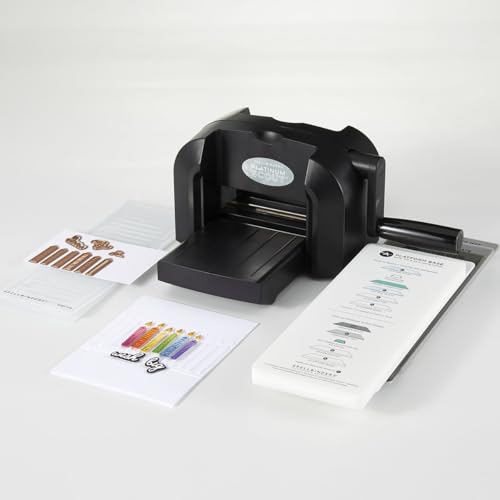What is a Die-Cutting Machine and How Does It Work?
Understanding the Basics of Die-Cutting Machines
A die-cutting machine is a versatile tool primarily used in crafting and design projects, allowing users to cut intricate shapes out of various materials like paper, cardstock, fabric, and vinyl. At its core, a die-cutting machine uses pre-made metal dies to create specific shapes when pressure is applied. This pressure can be manually operated through a hand crank or digitally executed using electronic models. Once you place your material between the die and the cutting mat and apply pressure, the machine smoothly cuts the material into a precise shape. This process is akin to using a cookie cutter, where the die acts as the cutter and the material as the dough.
Key Features to Consider When Choosing a Die-Cutting Machine
Exploring the Essential Features
When selecting a die-cutting machine, several key features should guide your decision. One essential aspect is the machine’s cutting size; larger machines accommodate bigger materials and projects, which can be beneficial for larger crafts. It’s also important to consider the type of material you wish to cut; some machines are more versatile and can handle thicker substances like fabric or chipboard, while others may be limited to paper or lightweight materials. Additionally, look for machines with user-friendly interfaces—those equipped with digital screens or simplified settings can significantly enhance your crafting experience, especially for beginners. Another critical feature is the speed and efficiency of the cutting process; some machines operate faster and cut more accurately than others, which can save you precious time on larger projects.
Best Die-Cutting Machines for Beginners: Our Top Picks
Choosing the Right Machine for Starters
For those just starting with die-cutting machines, a few models stand out for their ease of use and accessibility. The Cricut Explore Air 2 is a popular choice, known for its adaptability and user-friendly interface, making it great for beginners. It cuts a vast array of materials and comes with a design software that is intuitive to navigate. Another excellent entry-level machine is the Sizzix Big Shot, a manual option that offers robust performance with its straightforward operation. It’s particularly praised for its reliability and ability to cut intricate designs with high precision. If you’re looking for a compact and portable option, the Spellbinders Platinum 6 is fantastic as well; it’s lightweight yet sturdy enough to handle various projects, making it a favourite among crafters who are short on space.
Creative Projects You Can Make with a Die-Cutting Machine
Unleashing Your Creativity
The potential for creative projects with a die-cutting machine is virtually limitless. Many users enjoy crafting handmade cards, as the machine allows for intricate designs that can be cut out quickly, adding a personal touch to greetings for friends and family. Beyond cards, scrapbookers often utilise these machines to create detailed embellishments, enabling them to showcase memories in unique ways. For those interested in home decor, die-cutting machines can assist in crafting custom wall art, stencils for painting, or even personalised home signs. Additionally, fabric enthusiasts can cut patterns for quilts or appliques for clothing, enabling artistic expression in sewing projects. Essentially, whether you’re into card-making, scrapbooking, or sewing, a die-cutting machine brings a multitude of inspiring possibilities to life.
Maintenance Tips to Keep Your Die-Cutting Machine in Top Shape
Ensuring Longevity and Performance
Maintaining your die-cutting machine is vital to ensure it remains functional and continues to deliver precision cuts over time. First, always keep the cutting area clean—removing paper scraps and dust after each use can prevent buildup that may affect its performance. Periodically inspect and clean the cutting mats; a worn-out mat can lead to inaccurate cuts, so consider flipping or replacing it as needed to prolong its usefulness. Additionally, check the cutting blades; if they become dull or clogged, they can hinder the cutting process. It’s advisable to replace them according to the manufacturer’s recommendations. If your machine features electronic components, regular updates of its firmware can also improve performance and unlock new features. By following these simple yet effective maintenance tips, you can ensure your die-cutting machine stays in excellent working condition for all your projects.





















